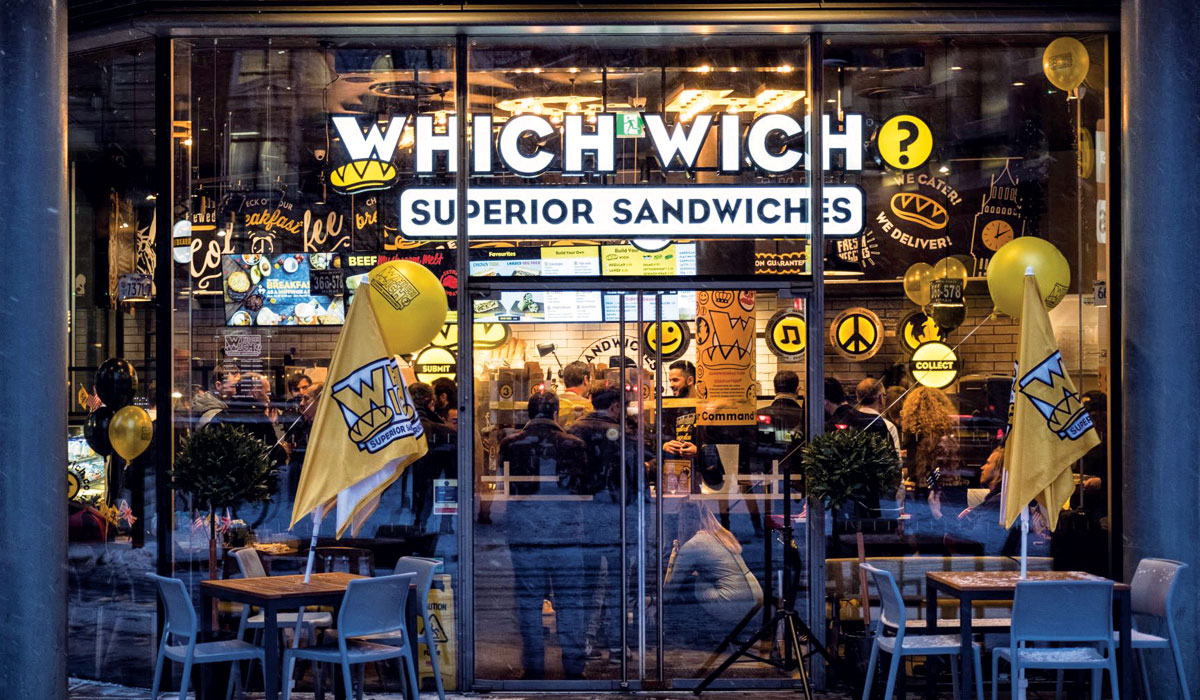Quaker Steak & Lube is known for going big. The full-service chain’s typical restaurant sits on upward of 12,000 square feet. But as real estate and labor costs continue accelerating, Quaker Steak is toning down its characteristic grandeur to drive more sustainable and energized expansion. The 46-year-old chain has unveiled various store formats, including one that cuts its typical square footage as much as 75 percent, drops the full bar, minimizes the decorations, and, in a noteworthy twist, embraces the fast-casual model.
“The question we’re asking is how we can do just as much volume in a more economical fashion,” says Quaker Steak vice president of operations and franchise services Bruce Lane.
For the brand and its franchisees, the smaller, fast-casual format unlocks fresh real estate opportunities, trims the upfront investment, and quickens the construction timeline. This, Lane says, enlarges the pool of prospective franchise partners, expedites the chain’s movement into new markets, and drives deeper marketplace penetration. Whereas a market like Cleveland might hold, say, five traditional Quaker Steak full-service restaurants, that same market might soon contain nine fast-casual units.
What’s more, limited-service locations only need about 80 percent of the staffing of a traditional Quaker Steak outlet while still supplying 90 percent of the chain’s menu. “With the fast-casual model, we can be flexible enough to tailor the businesses to our franchisees’ investment and their long-term well-being,” Lane says.
Quaker Steak isn’t alone in thinking small to go big. Restaurant brands across the U.S. are embracing smaller store footprints to seize real estate opportunities, particularly in highly competitive and expensive markets. The approach can also bolster franchisee ROI with lower initial costs and reduced operational expenses, as well as create concepts in line with shifting consumer habits.
Motivated by high rents and escalating labor costs—both elements that could stunt growth, if not derail a quick-service brand from reaching its promise—New York–based fast casual fresh&co has worked toward a smaller footprint.
The 19-unit chain combined its salad and grain bowl stations into a single station, which cut the overall length of the eatery’s line by 8 feet. In tandem, the company cross-trained its employees to capture labor savings. The company also reduced the length of its panini case by 2 feet, committing itself to making smaller batches of sandwiches more often, and dropped from four POS stations to two while adopting new technology to streamline throughput.
The collective changes have allowed fresh&co to cut roughly 100 square feet from its typical footprint and bolstered the company’s overall health. “We’re able to secure more locations with the smaller footprint and increase brand awareness in more communities, thus driving company growth,” says chief operating officer Alex Perez.
In early 2018, Which Wich captured immediate success with a 700-square-foot store in London. The slimmed-down unit encouraged company leaders to duplicate the concept in the U.S., particularly in top markets claiming fierce competition for real estate and franchisees.
“It’s vital that we evolve and find ways to bring the brand to strong markets,” says Which Wich senior vice president of franchise development Jeff Vickers. “It’s important that we have options for our franchisees to continue to grow and to attract franchisees with an experience that can be flexible to work in their desired market.”
The London unit’s strong performance has also opened the door for additional international expansion, especially in areas where large properties can prove particularly difficult to secure, while also positioning Which Wich to thrive in an evolving marketplace.
“We have to be mindful that with the boom in third-party delivery, online ordering, and continued growth of urban centers in metropolitan areas that scaling down and delivering on the brand experience in a smaller space is an inevitable eventuality,” Vickers says.
California-based hot dog chain Wienerschnitzel recently introduced two sleeker, more cost-effective versions of its iconic A-frame look. At 780 and 1,200 square feet, respectively, the Heritage and Heritage Plus freestanding models were designed with lower construction costs and operational efficiencies top of mind—an undeniable effort to drive the brand’s expansion.
Wienerschnitzel director of U.S. franchise development Ted Milburn says savvy operators want to know the ratio and timeline of costs relative to ROI before getting too far along with a brand. With its two downsized models, Milburn believes Wienerschnitzel presents its prospective partners the opportunity to develop a highly memorable new restaurant at a much lower investment than a traditional box building.
“Offering a lower-cost investment gives our franchisees the chance to compete for better real estate in markets already saturated with quick service,” Milburn says.
With an eye on franchise sales, Gyroville’s leadership knew it needed to make the brand more appealing from a financial standpoint. The 10-unit, Florida-based concept limited the size of its locations to 1,100 square feet while pursuing locations as small as 800 square feet that utilized a takeout window and emphasized delivery and pickup. Gyroville chief operating officer David Kurlander says this space restriction dropped the initial investment to as low as $250,000, which created opportunities for more franchising candidates, more stores, and more markets.
“Everything becomes more manageable [in smaller-sized stores], from working the cooking line to checking on the guests in the dining room,” Kurlander says, echoing others who promote smaller stores’ ability to lessen labor pains.













